Marketing compliance is a growing concern for the marketing leaders at both agencies and brands.
This article will cover tactical changes that marketing leaders can make to enact stronger compliance control over the entire creative production process. streamlining digital compliance review, moving out of a manual system and into a fully digital oversight process for your entire marketing team and all the different types of assets that you produce.
- Streamlining digital review and move marketing compliance review out of manual methods
- Improving collaboration and transparency with legal and compliance teams
- Manage content traceability and security across your entire creative process
- Generating audit trails of all marketing activities without creating additional manual work for your marketing team
What we'll cover
Table of contents
We’ll cover the many different tools and tactics your marketing team can use to expand and control that compliance oversight without having to always follow up with people and making sure that you're tracking how content is flowing between everyone's hands as you're iterating on it.
What is marketing compliance review?
Marketing compliance reduces brand risk by creating due diligence over elements within marketing assets and the process in which those assets are created, modified, approved, and used. A strong marketing compliance program:
- Creating due diligence over the elements within marketing assets, such as claims, disclaimers, disclosures, legal texts, and any asset included on design and products, and within your marketing communications.
- All the methods used to verify and approve that those elements have been applied correctly in your marketing assets based on your industry’s regulations.
- The process of tracking and comparing all of your version creation and version changes across every iteration of marketing content.
- The complete history of approvals and decisions around all your marketing and brand assets across your organization.
Marketing compliance review is often seen as an end step to the entire creative process. Marketing teams create a campaign and many brand assets and then, once the creative work is done, send it over a legal or compliance team for review, approval, or changes.
Instead of being a separate step that occurs at the very end of the creative process, marketing compliance should really be part of the entire creative process from the beginning to the end. Marketing compliance review includes:
Marketing compliance is just as much about the internal process of marketing creation as it is about, what's actually in your marketing and branding assets and how you're presenting that to your consumers.
The mechanics of marketing compliance starts at the beginning in verifying that you have a creative brief to the elements involved in that and the approvals of that to the final product, just ensuring that due diligence has been done across all of those assets.
A solid review process creates consistency in compliance oversight, not just within your internal marketing production, but how you're interacting with your partners, how marketing teams are interacting with their legal compliance teams, and all of the activities that expand beyond your creative team,
In the end, it's really about the process in which all of those assets are created, modified, approved, and used across the entire content production process and the way that you are able to trace the usage of those assets as they're created--not just the end stage of your marketing production.
How compliance impacts marketing leaders today
How big of a deal is compliance to marketing leaders today? Is it something that impacts everyone's daily processes or is it really just another step in the process?
Recently, we surveyed over 100 marketing leaders on their creative production best practices and needs--including marketing compliance. In this survey, we found that:
- 50% of marketing leaders said that compliance is a critical factor in their daily marketing activities. Across a huge a huge variety of industries and marketing teams.
- 33% said their content goes through some type of legal or compliance review, whether that's automated or not.
- 60% of brands and agencies said that, within compliance review, that maintaining brand consistency was their biggest compliance need.
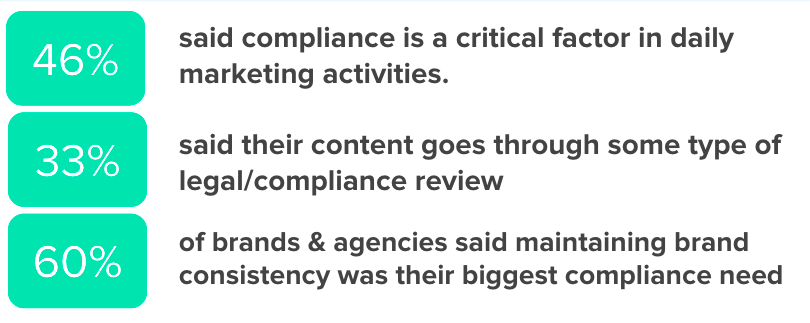
Marketing leaders today want to ensure that marketing assets have a consistent look and feel and everywhere that they're used, adhere to brand guidelines, are used accurately by brand partners, and meet regulatory requirements for how marketers can talk about their products and services. For agencies, protecting client data is also a growing area as marketers move into new digital, multi-channel campaigns.
While these concerns are impacting how marketing teams create marketing assets and how they set up their marketing workflows, we also found that we found that very few marketing teams have standardized and automated their compliance review process.
- 70% of the marketing leaders we surveyed said that they don't have a formal process in place to manage their compliance review. So, even though about half said that they do have some compliance review, it's fairly ad hoc, or it's not controlled, which can introduce a great deal of risk into your marketing and brand compliance.
- Only 6% of brands and agencies said they use some type of automation to manage their regulatory oversight.
- Less than 1% of marketing teams said that they use actual automation software to facilitate that.
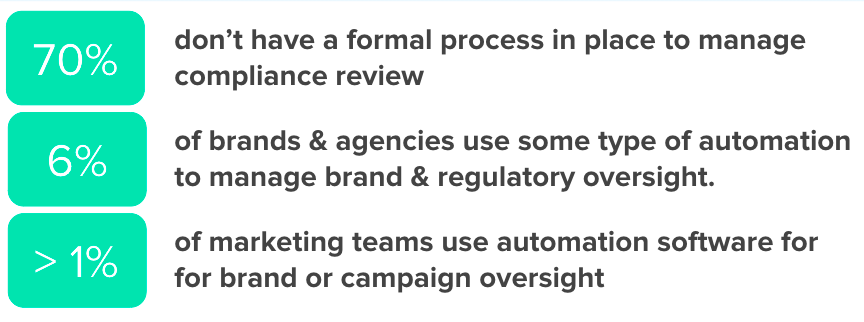
Compliance review is a major focus area for marketing teams in highly regulated industries, but few have implemented comprehensive tools or automated the review process in their organization. As such there is a lot of opportunity for marketing teams to automate the day-to-day tasks for improving efficiency and risk reduction in their marketing compliance review activities.
Challenges in facilitating marketing compliance review
What’s stopping marketing leaders from automating and improving marketing compliance review? Here are some of the top challenges we found marketing leaders face when trying to improve the regulatory review process:
- The compliance and brand review process is usually still managed through methods that aren’t easily traceable: email, Google Docs, hard copy printouts, etc.
- Marketing assets are used across many formats & channels today: the number & type of content versions and claims that need to be approved for use is too vast to be reviewed via manual efforts.
- There are more systems, collaborators and partners that “touch” marketing content in development; tracing and analyzing activities across all platforms and reviewers quickly becomes a headache.
- Regulations for social campaigns, influencers, product branding, and disclaimers in many industries are ever-evolving with consumer demand.
Specifically for compliance and brand review, marketing teams are still stuck managing compliance oversight through methods that aren't easily traceable. Many marketing teams are still sending assets to a legal team for review via email, using Google Docs with built-in checklists that are sometimes difficult to track, or using hard copy printouts. However, these methods have become untenable and untraceable as marketing assets are used across a huge variety of formats and channels.
For example, take an ad campaign for supplement products. Not long ago, the ad campaign might just include one ad or coupon like this:

Now, a similar product campaign might look something like this:

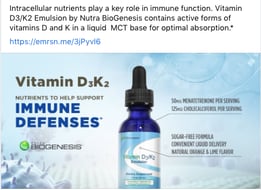
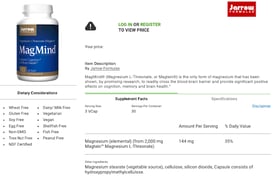
This campaign uses similar assets and messaging across social, email, physical mailers, and also pushes product listings and advertisements through a proprietary app.
That means the compliance team is now reviewing a much broader variety and volume of marketing assets and monitoring different regulations for all these different channels. How you're posting about a product on social may have slightly different requirements than how you're doing a product listing on your website, and may also have overlapping regulations that you need to make sure are consistent across all the areas where the same marketing asset is being used.
That's a vast amount of marketing content to try and review and approve for regulatory oversight using a non-digital method.
Today, there are just so many more systems collaborators, and partners that touch marketing content in development. No matter the industry, marketing teams are dealing with this explosion of different channels with different requirements that all need to be collaborated on between your marketing and compliance team. As a result, there’s simply more work being done that needs to be traced and analyzed across all these different platforms. The review activity that marketing teams need to trace is just expanding exponentially.
Without a consistent way to automate compliance review:
- Marketing teams can’t easily verify if/when compliance review has begun and legal teams can’t accurately communicate feedback and change requests.
- Marketing teams often don’t have the right digital tools to replace hard copy printouts with equally accurate version comparison, color comparison, and markup accuracy.
- Generating a history of all content changes, approvals, and content access across departments requires time-consuming manual work--usually for the marketing team.
For example, you may know that it takes your legal team a certain amount of days or a week to review a certain type of content, but with email it's impossible to verify: Did this person actually start looking at this asset for review? Are they looking up the regulations and laws around this, or have they simply not gotten to it yet?
It also makes it difficult for the legal team to know: What's coming down the marketing pipeline? What do we prioritize? What do I need to start researching now? Without a digital system to reduce the chaos and confusion in the compliance process, launch of some of these marketing assets can sometimes be delayed.
Plus, if you’re in an industry where you need to provide regular reporting or a marketing audit to a regulatory body, having to manually track the history of changes, versions, assets, and decisions is incredibly time-consuming. Generating reporting across those marketing steps, systems, and assets will eventually create a process bottleneck for your marketing team and often hold up more valuable work.
4 Automation tips for marketing compliance review
Digitizing the marketing compliance review process can seem overwhelming. If you’re a busy marketing leader, finding tools that can help you enforce control over all these assets, collaborators, and systems without sacrificing accuracy and flexibility in the creative production is always top of mind.
Here are four really hands-on ways that you can use to automate and improve compliance review, take some of the stress and chaos of compliance review off your plate, and collaborate more efficiently with your compliance team members.
1. Incorporate formal compliance review stages into your marketing workflows
Workflow templates provide standardization and take the thinking out of routing your assets for approval. They also allow you to set and forget approval routing rules, which help boost the consistency and traceability of your compliance review process.
When creating different stages of review, it's very easy to add on legal and compliance review as a step in your entire workflow workflow process. It's important to start incorporating your compliance team as a group within that process.
- Adding compliance review as a formal workflow stage enables marketing teams to set pre-set steps, roles, and deadlines for compliance review--making sure legal review happens over content each and every time it is required.
- What is often an “final check” can be incorporated earlier into the process to prevent rework or gain legal insight sooner in the content development process.
- Singular, parallel, or multi-stage compliance review stages can be triggered by other marketing actions, such as the creation of a new version or approval by another team member--reducing follow-up for your marketing team.
- Real-time status tracking for each content piece creates transparency across your organization. Compliance team members can see what’s coming down the content pipeline & marketing teams can see when compliance review has started, how long it may take, and when approvals have been made.
- Approval decision checklists indicate not only when approval (or changes) occurred but why--creating more insight into compliance needs and automatically tracing the decision-making process. They also give busy compliance teams one easy-to-use place to work with and approve marketing content.
- Compliance decision actions can be used to control and initiate when different review steps or content changes/versions occur.
Workflow stages enable you to configure exactly how you prefer to (or are required to) facilitate compliance feedback and legal feedback on your marketing assets. You can either shield assets from compliance review until the creative process has started, or you can incorporate compliance team members as active participants sooner or at multiple stages in the creative flow--formalizing their and your role in the marketing compliance process.
-5.png?width=809&name=Intake%20Forms%203%20Ways%20to%20Bring%20Content%20From%20Clients%20into%20Your%20Creative%20Production%20Workflows%20(Without%20Using%20Email)-5.png)
For example, typically, an asset might go through a technical review, then when technical review approves it, it goes to copy team for review, then when copy approves it, it goes to legal and compliance review, and so on.
Instead of this kind of linear compliance checkpoint, you can use parallel workflow stages to make compliance review dependent on another review stage, such as copy review. With a parallel/split path, you could trigger legal and compliance review and QA review to trigger based off of that approval. If copy approves an asset, then the legal and compliance team could go ahead and start reviewing it. If copy says changes are required, then in that case, you could send it to a different review group entirely.
You could also configure a split compliance decision path. For example, if an asset requires additional changes due to regulatory review, it can first be routed back to QA for a deeper review before it moves back to the designer, studio, or production group to make the adjustment.
The other benefit to adding compliance review stages into your marketing workflow process is the ability to implement approval decision checklists. Decisions checklists indicate not only when approvals or changes occur, but why, and also allow your team members to indicate very specific regulatory reasons (doesn’t meet FDA compliance, logo not correct, etc.)
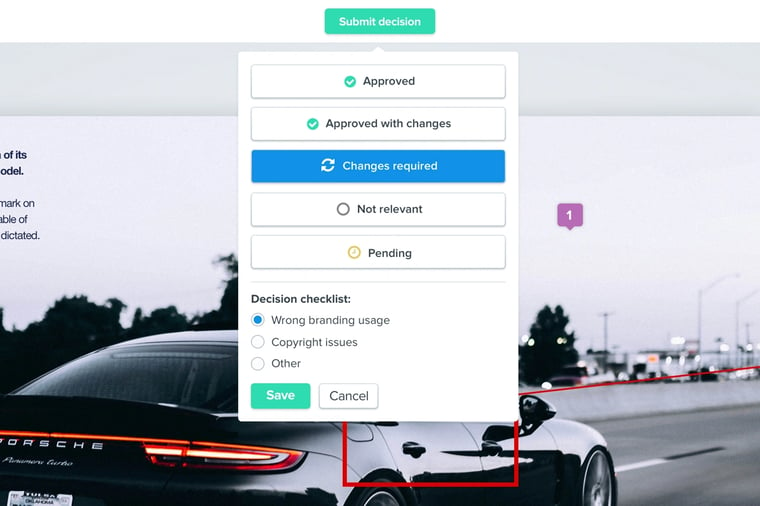
In the past, your compliance team members might email back about a certain marketing asset with their required changes. With decision checklists, the decisions and the reasons for those approvals are marked directly and automatically on the marketing asset themselves, across all the versions that come out of those changes.
Furthermore, these decision actions around approvals and the reasons that assets are approved or not approved during regulatory review can then be used to trigger different parts of your marketing workflow.
When you formalize compliance oversight as a key stage or stages in your workflow automation, it creates a much more consistent, traceable review process that's enforced across the entire creative process.
2. Connect measurement / comparison tools with content feedback
One challenge that comes up often for marketing teams that want to move away from using email is not having an ensured, accurate digital method to replace design review for physical printouts.
For example, marketing teams that deal with physical products often need to be able to review color accuracy for all the different options of product of labels and/or review the measurement of barcode placement in a very accurate way. Small image movements, color corrections, and placements and size of design elements can end up having a big impact on how compliant your assets are with different regulations in your industry.
When evaluating digital tools, marketing teams need to ask “What's going to give us the most accurate version comparison and color comparison? Does this offer detailed enough tools for accuracy that will give us the confidence to replicate what we're doing in a digital space?”
Marketing teams can benefit from online proofing tools that offer:
- Full-scale rotation and zooming capabilities down to the pixel, millimeter, or inch.
- Input and measurements against sizing requirements.
- The ability to markup content and add comments and changes based on these functions.
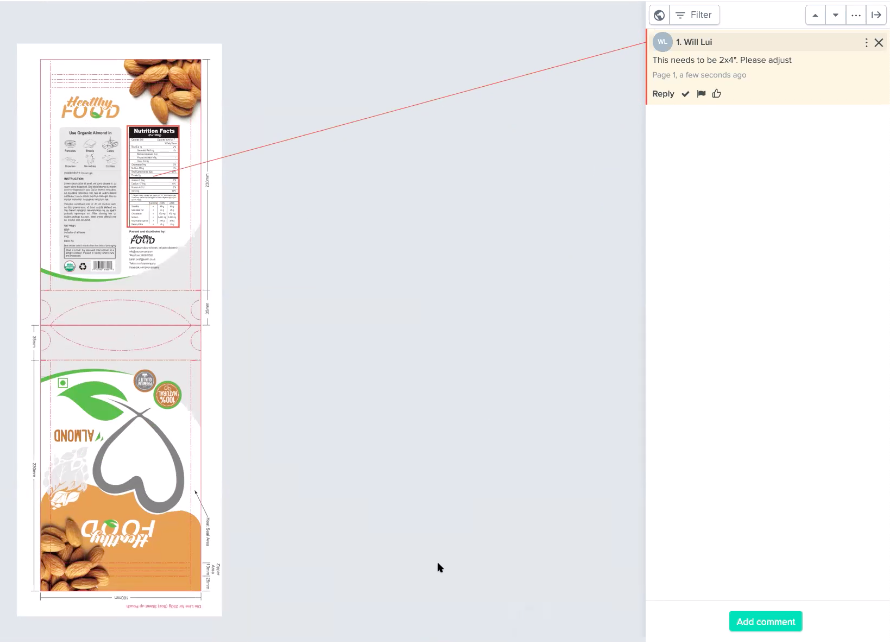
Being able to measure the placement of disclosures, disclaimers, barcodes, other legal texts-- not just verifying that that actually appears on and in your marketing assets, but that they appear in the right placement and the right way--becomes a lot easier when you have a digital tool that you can overlay onto your asset.
Having a measurement tool that you can use to zoom in on an asset, measure a certain element down to the millimeter or down to the pixel allows your marketing team and everyone involved in the process to start tracking very, very minor changes that would typically be missed, or just be very hard to see with the human eye.
This also saves a lot of time for your design team. Your designs or reviewers don't need to pull a file out of the review, drop into a production tool like Photoshop or illustrator to use grid lines and measure it for regulatory size or placement requirements.
3. Get more granular with content sharing & security using workflow templates
The third recommendation that we have is to use workflow and proof templates to codify the rules and regulations around how others interact with your marketing content into your marketing production.
Marketing compliance doesn't just include activities between your creative team and your legal team. It really includes all the way you are interacting with your external partners or other departments in your organization, making it important to extend the security and review workflow controls to those interactions as well in order to create a traceable history of all business activities.
If you have different groups that need different levels of access to your marketing content as it's being produced (a first draft needs to be seen by your design and legal team, only the fourth version needs to be sent to the client team, etc.) you can start hard coding those rules into your marketing workflow templates.
One way to do this is by using strict workflow templates. Strict workflow templates allow you to apply predictable content usage access and security across all your different marketing assets depending on the type of project, depending on the version, and depending on the stage it's in.
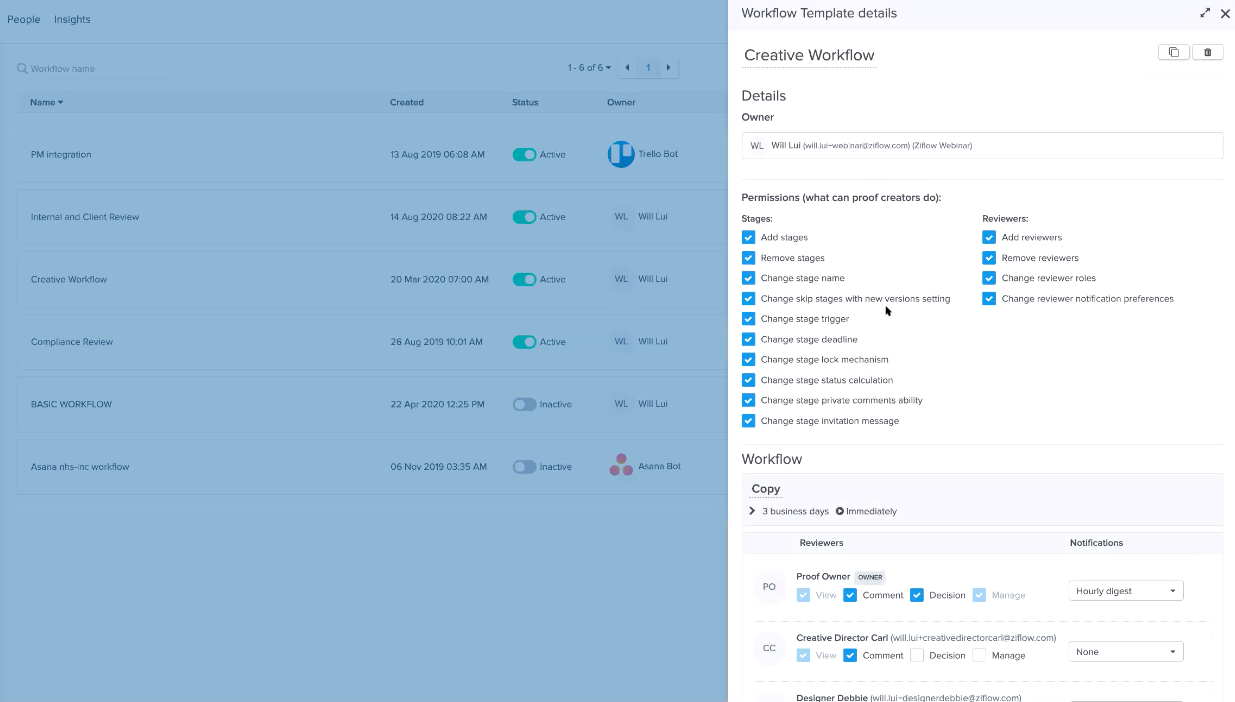
Strict templates allow you to lock down what collaborators can and can't do. Strict templates:
- Prevent collaborators from creating unauthorized versions, uploading a new design file that is sent to people that shouldn't see it, or don't need access to it.
- Prevent modifications, such as adding comments or annotations,
- Control if reviewers can be removed or added from review stages, ensuring that right people always see the content they need to approve at the right time.
- Ensure compliance and review workflow stages can never be deleted, so the same review process is enforced every time, the same way.
Rather than having one flexible workflow where your marketing creators decide (or guess) who should be a part of that review process, you can simply set up a workflow template, restrict the activities and settings around content usage, and apply that template to all relevant projects. This ensures you’re covering all compliance checks that you need every time: All the correct reviewers are there. All the correct routing will be applied. All the correct sign-offs will be enforced before work progresses.
When building strict templates, we recommend asking two questions: Should our template allow for the flexibility for review stages to be added or removed? Should reviewers have the ability to be added or removed? For example, if you want a legal and compliance review, should there ever be an option for someone from your legal team or your compliance team to be removed from that workflow?
This kind of control allows you to implement just a much more granular level of security throughout your creative process without having to configure these rules every time you're creating a new ad or you're creating a new campaign.
4. Generate robust digital marketing audit trails
When you’re in the creative production process, it’s easy to focus on the key campaign benchmarks: Are we hitting our deadlines? Is this going live at this certain time? Has everyone who needs to see this before it launches given their input? The focus is “let’s get this out, let’s get this moving,” rather than “Are we tracking this for a post-mortem analysis in the right way?"
As a marketer, you've probably already moved on past that campaign long ago. Having to go back and do an analysis can be very time-consuming. Being able to generate an on-demand audit report of marketing content activities on demand is an incredibly important step to automating marketing compliance review--and saves you from having to dig through emails, messages, timestamps, and files later on to figure out a history of content changes and approvals.
Whatever system you use to track your digital marketing activities and your review and approval tasks should allow you to quickly generate a report of all the activity in that system and around the content.
- Audit reports should include not just a full list of not only the marketing content created, but all of the comments, replies, attachments, decisions, and dates and times of access--for both the original version and all versions created.
- Detailed proof filtering for more precise reporting. You should be able to drill down and export content and its usage based on a wide range of content attributes, such who owns/created a proof, when it was created, what folder it lives in, etc.
- Audit trails also have the benefit of providing a more complete post-mortem project analysis: How long did each production stage take? Which reviewers “sat” on content longer than you’d like? Does rework tend to occur more frequently at certain stage?
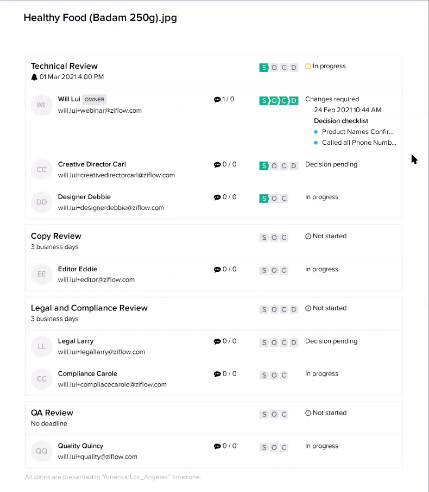
When compliance is incorporated as a formal step in the marketing production process, all the stages of a review workflow, all the markups and annotations, all the submitted decisions and their reasons, and even each time someone opens an asset, are all being captured in the background and feeding directly into this activity log.
With this real-time tracking, it’s much easier for marketing leaders to generate a summary report for an audit or regulatory report, or even just for internal reference. You no longer need to sift through hundreds of emails, files, activity logs, systems, and chats to stitch together a history of marketing approvals. It’s all in the background being captured automatically from the very beginning of a project.
Being able to generate all of this information on-demand also provides marketing teams with a high-quality, low-effort post-mortem project analysis.
We’ve seen marketing leaders use audit reports to not only prove that they went about their marketing activities appropriately, but also to analyze their entire production process. It allows marketing teams to answer: How long did each production stage take/ Is something getting held up in our legal review consistently, or does the initial creative brief process take a really long time?
Being able to both track and generate summary reports of your marketing content not only enables you to cut down on the time allocation to marketing compliance oversight, but allows you to just more deeply analyze your content production process across all of your projects.
Watch the full webinar on marketing compliance
Conclusion
Marketing compliance review is a continually evolving area for marketers. At times, adhering to these standards can seem overwhelming when you’re doing so many different marketing activities across channels and collaborators.
However, an ounce of prevention is really worth more than a pound of cure. Marketing compliance review is an untapped area for marketing automation. Marketing teams benefit from getting a chaotic review process out of the inbox and starting to implement formal controls and standards that enforce consistent compliance review, but also reduces the manual work and manual oversight for your marketing team.
Leveraging strict and automated workflows with granular access, split decisions and approvals paths, navigation annotation tools, and auto-generated marketing audit reports can help your marketing team to start standardizing the way that different groups are interacting with your marketing content and monitor your marketing activities over time.
These tactics and tools allow you to create and enforce a controlled structure for regulatory oversight across all of your content production activities, every time an asset is created and proofed internally and externally, with all of the tracking is taken care of behind the scenes for you.





